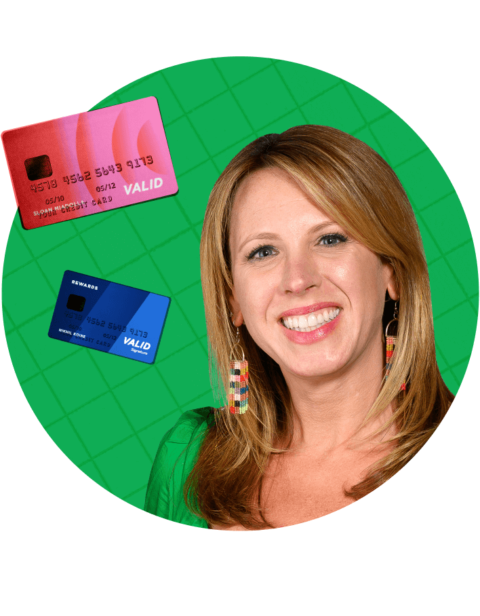Chase 5/24 Rule Explained
The 5/24 rule limits how many new credit cards you'll be approved for within a 24-month period.

Many or all of the products on this page are from partners who compensate us when you click to or take an action on their website, but this does not influence our evaluations or ratings. Our opinions are our own.
The Chase 5/24 rule limits the number of credit cards you can be approved for within a two-year period and still qualify for additional Chase credit cards. Here’s everything you need to know about the Chase credit card rules so you can plan your applications.
What is the Chase 5/24 rule?
To be approved for a Chase credit card, you must have fewer than five approvals for credit cards within the last 24 months. When you apply for a Chase credit card, Chase will count the card you’re applying for as part of your allowed five approvals. This means that you can only have been approved for four credit cards (with any issuer) in the preceding 24 months.
Business credit cards that do not show up on your personal credit report will not count toward your 5/24 score. (More on this below.)
Chase published the 5/24 rule on the application page for the Chase Sapphire Reserve® in 2016, but on Sept. 1, 2016, all language referring to 5/24 was removed from the website. That remains true today, as the 5/24 rule is not published anywhere by Chase.
Because of this lack of documentation, much of what’s understood about this rule comes from crowdsourced information. Starting in 2015, when the original rule seemed to have gone into effect, many applicants with self-reported excellent credit (defined as 720 or higher) have shared on social media channels that Chase representatives communicated their denial was due to having opened too many credit cards in the last 24 months.
In fact, this happened to me in 2016 when my application was denied. I called Chase and got the same explanation.
Chase isn’t the only issuer to impose a limit on the number of approved cards. American Express, Barclays, Citibank and various other banks have their own rules. Although rules differ between issuers, the underlying message is that banks want to prevent consumers from having too much credit and either getting into debt or abusing rewards programs.
Win Private Travel 'AMA' ($250 value)
Get the ‘cheat codes’ to using travel points and miles so you can spend less cash. 📥 Sign up for our free newsletter before Jan. 4 and enter to win a 1:1 travel rewards coaching session.

How to calculate my 5/24 score
When you apply for a credit card, you authorize the bank to run your credit report. The bank will pull your credit report from one of the three credit bureaus: Equifax, Experian or TransUnion.
The credit report will include a lot of important information about your financial profile, including all of the credit cards that you have opened and closed, and when you applied for those cards.
When Chase runs your credit report and finds five credit card approvals in the past 24 months, you will automatically get declined for a Chase credit card. So if you were approved for a card on Jan. 15, 2023, that card may no longer be considered as part of your 5/24 count by Feb. 1, 2025. There have been reports of people getting approved within a few days of a card falling off the 5/24 list, but there is no guarantee that will happen.
Note, if you are added as an authorized user on someone else’s credit card, the card will likely count toward your 5/24 score.
» Learn more: Who can access your credit report or score?
How to check 5/24 status
There is no such thing as a Chase 5/24 calculator, so you’ll need to do the math yourself. Luckily, it's fairly easy to do.
Before you apply for a Chase card, calculate your 5/24 score by looking at your credit report. You are entitled to at least one free copy of your full credit report from each major credit bureau every 12 months.
🤓 Nerdy Tip
Go to AnnualCreditReport.com to get your free credit reports, which will provide your credit history from all three bureaus. To calculate your 5/24 score, add up all the credit cards that you have been approved for over the past 24 months.
Look at the sections that contain the list of both your open and closed accounts. Even if an account is currently closed, if it was opened within the past 24 months, Chase will count that card.
When you add up all the cards you’ve been approved for over the last 24 months, if that number is four or less, that means you have one slot available and you can be approved for another Chase credit card.
» Learn more: How to understand your credit reports
🤓 Nerdy Tip
After you get your full free credit report, create a spreadsheet to track the number of credit cards you have been approved for over the past 24 months, along with the approval dates. This information will help you decide when you can apply for a new card. Which credit cards are subject to the Chase 5/24 rule?
This data is based on crowdsourced information and is subject to change without notice from Chase. With that said, based on the latest findings, the following Chase credit cards are subject to the 5/24 rule:
Chase personal credit cards
- AARP® Credit Card from Chase.
Chase Business credit cards
Which accounts are NOT counted in the 5/24 score?
Mortgages, auto loans, student loans, credit cards that you were not approved for and certain small-business cards (see below) do not contribute to your 5/24 score.
Generally, all personal credit cards, including charge cards and retail store cards, are factored into your 5/24 count. In addition, business cards with TD Bank, Capital One and Discover are included.
If you have been added as an authorized user on another individual’s credit card, you can ask Chase to exclude that card from your 5/24 count. One way to get an authorized user account removed from a credit report is to ask the primary cardholder to remove you from the card, then contact each of the three credit bureaus (Equifax, Experian and TransUnion) and ask them to remove that card from your report.
Do business cards count toward 5/24?
Typically, business cards approvals do not count toward your Chase 5/24 score. This is because business cards are associated with a business rather than with the individual applying for the card. This applies to cards from AmEx, Bank of America, BBVA, Citi, U.S. Bank and Wells Fargo.
So if you have a business along with a business credit card, you won't have to worry about high balances on your business card affecting your personal credit score. Some card issuers report business card activity to commercial credit bureaus rather than consumer credit bureaus.
NerdWallet contacted representatives from various banks to find out their policies regarding business card reporting and found the following:
| Does the issuer report small-business credit card activity to consumer credit bureaus? | Does the issuer report small-business credit card activity to commercial credit bureaus? | |
|---|---|---|
| American Express | Yes, but only negative information. | Yes. |
| Bank of America | No. | Yes. |
| BBVA | No. | No. |
| Capital One | Yes, for some cards. | Yes. |
| Citi | No. | Yes. |
| Discover | Yes. | Yes. |
| U.S. Bank | No, unless the account is seriously delinquent. | Yes. |
| Wells Fargo | No. | Yes. |
In addition to the above, it appears Barclays doesn't report business card activity on your personal credit report, while TD Bank does.
Do Chase business cards count towards 5/24?
In order to get approved for a Chase business card, you'll need to be under the 5/24 count. So, if in the last 24 months, you were approved for five personal cards, you have no slots available.
However, if you are under the 5/24 count and are approved for a Chase business card, the approval will not add to your count since business cards typically do not appear on your personal credit report.
Do product changes on existing credit cards count toward 5/24?
No, product changes do not take up a slot in your 5/24 score.
An example of a product change is when you downgrade a credit card from one with an annual fee to a no-annual-fee version in the same family of cards. Maybe you want some perks of the card, but not all of the ones that the annual fee version offers. An example of a downgrade would be asking Chase to convert your Ink Business Preferred® Credit Card (annual fee: $95) to an Ink Business Cash® Credit Card (annual fee: $0).
When you do a product change, the card number remains the same, but the expiration date and CVV reset. Because the card number doesn’t change, it doesn’t count as a new credit card approval.
🤓 Nerdy Tip
Requesting a product change rather than applying for a new card also typically makes you ineligible to earn the welcome offer on the card you’re switching to, so only do this if you know you won't want to earn the welcome offer on the new card. Chase 5/24 rule exceptions
If you’re wondering how to bypass Chase’s 5/24 rule, you don't have a lot of options. There is one instance in which you may be in luck: "Just for you" offers.

"Specific for you" or “Just for you” offers are exactly what they sound like — special offers that you see once you log into your Chase account. Rumor has it that if you see a card in this section and it includes a fixed APR, you can apply for it even if you are at (or above) 5/24. If the APR is variable, you will be denied if you’re in violation of the 5/24 rule.
Chase 5/24 strategy
If you’re just getting into the world of miles and points and are considering cards from various issuers, plan to apply for Chase credit cards first given their strict 5/24 rule.
If you already have a few slots filled in your 5/24 count and are considering a non-Chase card, check if there is a business version of the credit card available. If so, find out if the issuer reports approvals to a personal credit bureau. If the issuer doesn’t, the card will not count toward 5/24.
Frequently Asked Questions
How do I check my 5/24 status?
Download a copy of your free credit report from one of the three bureaus (Transunion, Equifax or Experian) and count all the credit card accounts that you’ve been approved for in the last 24 months (also count closed accounts). Add up all these credit card accounts to get your 5/24 score.
If I close a credit card that I was approved for in the last 24 months, can I bypass 5/24?
Unfortunately not. Chase counts credit cards toward 5/24 even if they have been closed.
How to bypass the Chase 5/24 rule?
If you’ve been approved for five cards in the past 24 months, you will not be approved for another Chase card thanks to the 5/24 rule. There have been reports of “Selected for you” and “Just for you” offers being exempt from the 5/24 rule.
Do Chase mailers bypass the 5/24 rule?
Generally, targeted offers that have been mailed or emailed to you count toward Chase’s 5/24 rule. There have been reports of some individuals receiving approval; however, the information is not consistent enough to recommend this method. If you’ve received a targeted mail with an RSVP code, you could try calling Chase and ask if it's possible to process the application and bypass the 5/24 rule.
Final thoughts on the Chase 5/24 rule
Although the Chase 5/24 rule isn’t officially published anywhere, it remains in place. If you’re just beginning your application journey, you’ll want to be deliberate with your applications. Chase Ultimate Rewards® are an extremely versatile rewards points currency, and if you’re looking to earn these points, you’ll want to prioritize Chase cards above others given Chase's stringent 5/24 rule.
If you’re already at 5/24 and are waiting it out, focus on business cards that are not reported on your personal credit report.
The information related to the Marriott Bonvoy Bountiful™ Card, Chase Freedom®, Chase Slate®, United℠ TravelBank Card, Starbucks® Rewards Visa® Card, United Club℠ Business Card (annual fee: $695), DoorDash Rewards Mastercard®, and Disney® Visa® Card has been collected by NerdWallet and has not been reviewed or provided by the issuer of this card.
How to maximize your rewards
You want a travel credit card that prioritizes what’s important to you. Here are some of the best travel credit cards of 2026:
- Flexibility, point transfers and a large bonus: Chase Sapphire Preferred® Card
- No annual fee: Wells Fargo Autograph® Card
- Flat-rate travel rewards: Capital One Venture Rewards Credit Card
- Bonus travel rewards and high-end perks: Chase Sapphire Reserve®
- Luxury perks: American Express Platinum Card®
- Business travelers: Ink Business Preferred® Credit Card
Article sources
NerdWallet writers are subject matter authorities who use primary,
trustworthy sources to inform their work, including peer-reviewed
studies, government websites, academic research and interviews with
industry experts. All content is fact-checked for accuracy, timeliness
and relevance. You can learn more about NerdWallet's high
standards for journalism by reading our
editorial guidelines.
More like this
Related articles







